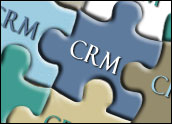
Economics is a social science, much to the chagrin of neoclassical economists who prefer to think of it as a hard science, like physics, full of equations and certainty. I think of myself as a Keynesian, and while I can see the equations, the certainty eludes me. What I see mostly are people, all of us, with our reptile brains wrapped in a layer of mammalian sensibility trying to satisfy our needs. Economists refer to us as “rational actors,” but we are hardly that.
A few years ago, The Economist magazine ran an article discussing economics as a hard science, referencing a very good article by the late Sumantra Ghoshal of the Advanced Institute of Management Research (AIM) and London Business School. In its inimitable, cheeky and very British way, The Economist described the hard science/soft science disconnect as “physics envy,” and I still chuckle whenever I think of it.
I have given a lot of thought to this disconnect in the last few years, especially when I think of sustainability and its increasing necessity in the world generally, but especially in business. In my opinion, economics and CRM will always be soft sciences, but there are analogies with hard science that we might profit from. I refer to them irreverently as the four laws of conservation in CRM. I apologize in advance to any real scientists who may stumble upon this.
Mass and Energy
My inspiration comes from two laws of conservation that underpin our understanding of reality: the conversation of mass and of energy. Mass and energy can neither be created nor destroyed, only converted from one form to another. Einstein showed the equivalence between the two, and today it’s just one big law.
Of course there is a huge difference between conservation of mass and energy and my more feeble attempts at describing conservation in CRM because mine are only metaphors. Nevertheless, these metaphorical laws of conservation are already showing up in the marketplace through software made by emerging companies, and I offer them as things to think about as you plan the year ahead.
- Conservation of Momentum
The credit crunch has been with us for several years, and I expect it will stay for another five to seven as companies and individuals slowly rehabilitate their balance sheets. It would be better if we all bit the bullet and spent our way to prosperity, but as in skydiving, we all prefer that someone else take the lead. The work-around is converting big-ticket purchases into subscriptions to maintain your corporate momentum.
The idea as well as the reality of subscriptions has taken hold not just in software or the front office, and you can expect to see the trend accelerate. I look to companies like Zuora and Aria to continue making strides in this area.
- Conservation of Customer
The marketplace is still bringing us new product categories, though not as many as we once saw. Consequently, many companies have realized the importance of cross- and up-selling their existing customers. It’s driven many to put on charm offensives run by social media. Conservation of Customer used to be known as “customer service,” which is an inherently reactive idea and not recommended.
If you are not out front of your customers collecting and analyzing their input through social media and analytics, you are behind the curve. This is not the only place where social media shows its importance, but it is one of the several vital areas that need your attention. Without customers, what are you? This is a job for drip marketing from companies like Marketo, Eloqua and Radian6. I know you’re probably thinking that marketing tools are for net new customers, but think again. They’re for communication.
- Conservation of Deal
The worst outcome of a sales process and possibly the most common — it’s hard to know because data is tough to come by — is not a loss but a failure to decide. This can take a couple of forms. One week a deal is right there in the forecast, the next it’s gone without a trace, or the deal becomes a perennial part of the forecast, wallpaper that is ignored.
Avoiding either of these fates requires tracking and analysis, and not the kind that comes from putting a deal in a spreadsheet. You need to know where a deal is in its journey to closure and how that journey compares with other successful deals. You can’t do this if you are a sales manager in charge of 10 people who each track 40 or 50 deals. You need analytics and a method, and for that you can look to an expanding list of companies as diverse as Cloud9 and SAS. But don’t think you can do this with a spreadsheet.
- Conservation of Opportunity
Lastly, too many opportunities fall through the cracks for any number of reasons — the customer isn’t ready to buy, there’s no budget, they’re budgeting for next year. Busy salespeople filter these opportunities out of their 90-day windows, and rightfully so. But a company and a marketing department worth its salt needs to recycle these opportunities, nurturing them until they’re, well, ripe.
This once was a pie-in-the-sky idea, but no more. Few companies can afford to waste an opportunity, and conserving them requires the same kinds of software that you use to conserve customers above.
You can make the case that in at least two and probably three conservation scenarios above, marketing technology is the most needed tool, not sales. You could say that sales and even service take a back seat to marketing these days — is good service good marketing and vice versa?
As you look ahead at 2012 and how you plan to grow business, are your ideas lining up like this, or are you simply taking last year’s numbers and projecting another 3 percent? I think there’s a lot of business to be done next year, but it will take some different approaches, and a conservation mindset might be a good place to start.
























































